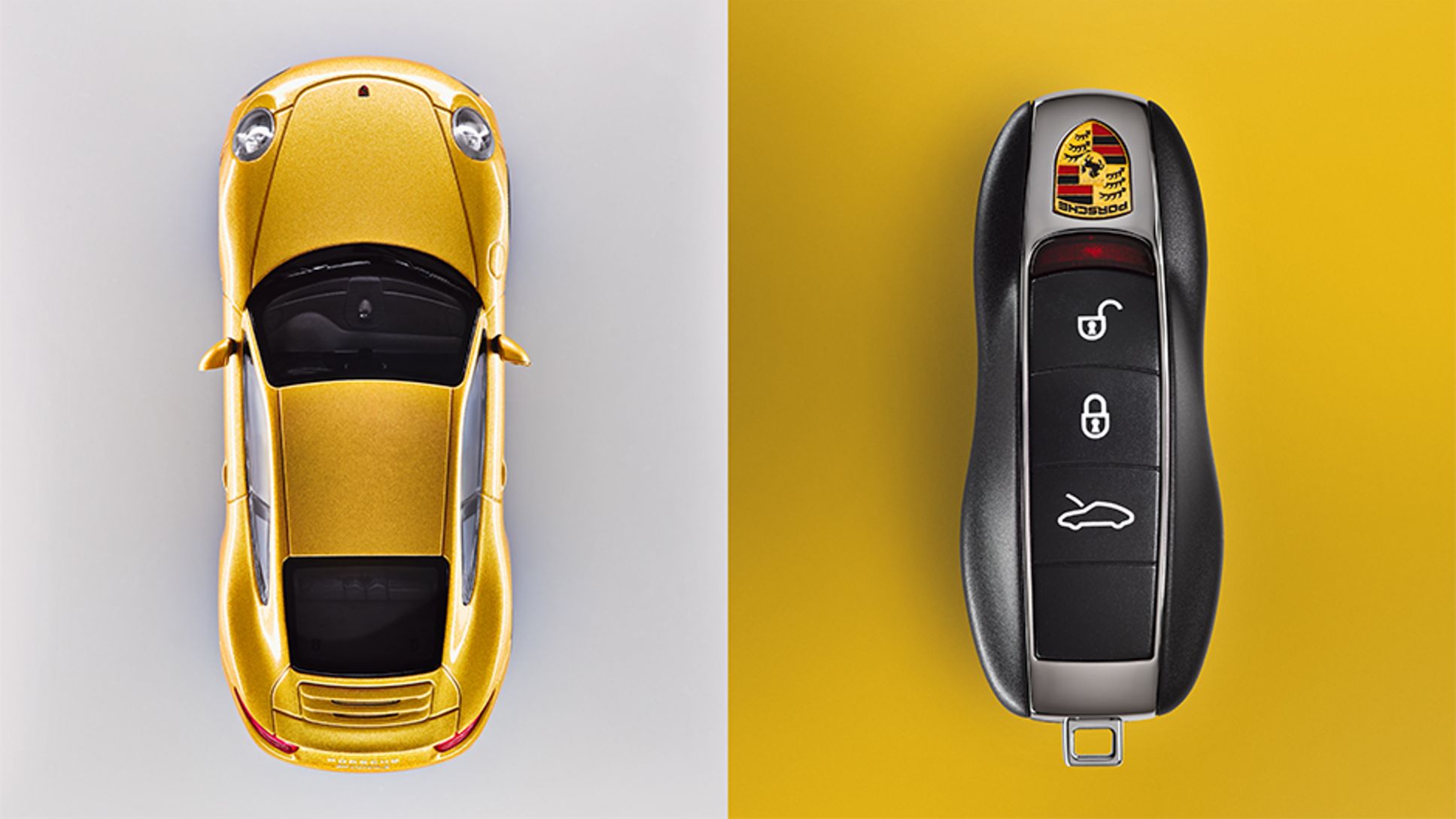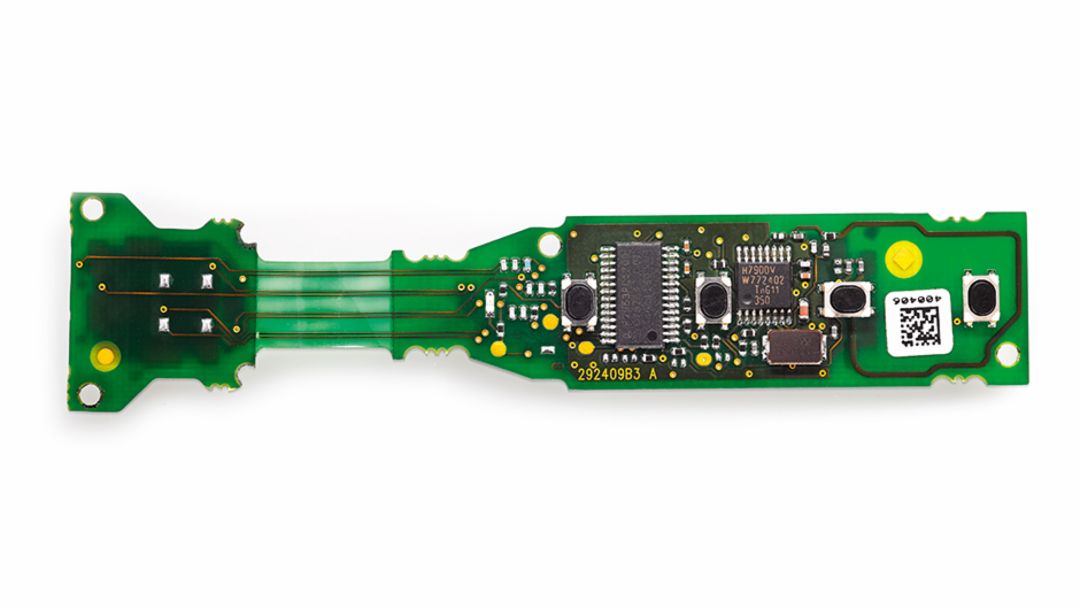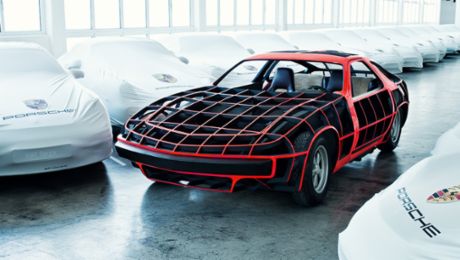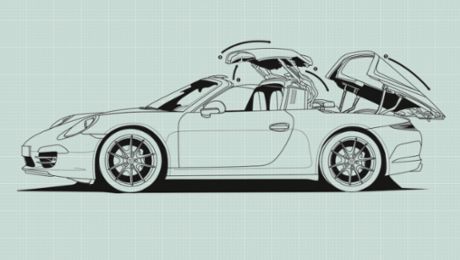This story has teeth. That would almost have to be the case, if we’re talking about keys. Or would it? Porsche keys snuggle into your hand like little sports-car sculptures. But their old-fashioned teeth appear to be gone. No, not quite. They’re concealed inside the miniature model Porsche, and can be liberated with a deft move or two. If need be, therefore, you can open the door without the radio signals and battery behind the button. And opening the door is the most important function of all, aside from starting the engine itself.
Attention to detail
It also has great symbolic value: think of the honor of being awarded the key to a city. But we are talking about Porsche drivers here, so what’s important is a key experience. Sascha Kissner’s official title alone indicates that keys are more than just door openers. He is the director of development for electric/electronic car-body security systems. A 911 key lies on his desk, and you can see that it shows a silhouette, not just of the series, but of a cabriolet. Porsche values attention to detail, as do its customers. “After all,” remarks the expert, “the key is the first part of the Porsche you have in your hand every day.”
That’s why the engineers also engage in intensive dialogue with the designers when they develop a new generation of keys. After three or four years, the result is presentable on both the outside and the inside. The key should be as flat and compact as possible. The current optimum has a basic surface area of around 80 × 33 millimeters. It has to accommodate the battery, for one thing, and also take the rule for transmitting functions into account, namely, the bigger the antenna, the better.
True miniature marvels
The circuits on the flexible circuit board play a decisive role in what today’s keys can do. The keys are true miniature marvels. Just the fact that you can open the roof of the cabrio or unlock the luggage compartment and doors from afar shows the smooth communications between the data storage unit in the key and the control systems in the car. The key also activates the memory functions for the seat positions.
“It can be trained,” says Kissner, meaning that it is a transmitter and receiver at the same time. Transmitted by radio waves, its signals are coded by cutting-edge encryption processes. Porsche’s Entry & Drive system has further reduced active use of the key. Just leave it in your pocket, because gripping the door handle will prompt the search for an access code stored in the key, which will unlock the door.
The car itself is started by a turning motion, in typical Porsche fashion, to the left of the steering wheel. The engine is turned off the same way. The car is then locked by pressing a button on the outside of the door handle (or by sensor for the Macan).
The key has to be user-friendly, which is already evident in its tactile qualities. The buttons on the surface are designed in such a way that they have to be pressed deeply to activate a function—which prevents you from opening the car by mistake when the key is in your pocket. Stability is very important as well.
Each key is one of a kind
There’s yet another area where not the slightest compromise will be tolerated. Every Porsche key has to provide the highest degree of theft protection, which is why each key is one of a kind. Aside from the spares (up to seven per car), no other key is the same. For all of the complexity of the electronic interior, there is a simple rule of thumb: “The fewer the interfaces, the more difficult it is to overcome them.” Although the engineers would never use the word “impossible” when it comes to breaching modern security and engine immobilizer systems, their version comes very close.
They are not aware of a “successful assault” on a Porsche by way of the electronics. The latest car key for the 997 model of the 911 shows how rapidly encryption is evolving. Classic short circuits, such as those still shown in gangster films, have long been a thing of the past. If you lose your key, the replacement team at the Porsche Center will immediately use the database to deactivate it.
Key as such is indispensable
Despite the advances in digital technology that offer new possibilities in the field of car keys, Kissner and his colleagues still consider the key as such to be indispensable. Technically, of course, it would be possible to perform the same functions with a cell phone. But even if the associated security concerns could be overcome, a major problem would still remain. “Most people get a new phone every two years, or even more often,” says Kissner, “but a key is supposed to last for the lifetime of the car.”
That being said, the engineers are a little proud of the fact that a replica of their key shell has recently appeared in the Far East—in the form of a cell phone. But you can really only use it to make phone calls, not to start up a Porsche.
Info
Text first published in the Porsche customer magazine Christophorus, No. 368.
Consumption data
911 (Type 991): Combined fuel consumption: 12,4 – 8,2 l/100 km; CO₂ emission: 289 – 191 g/km





